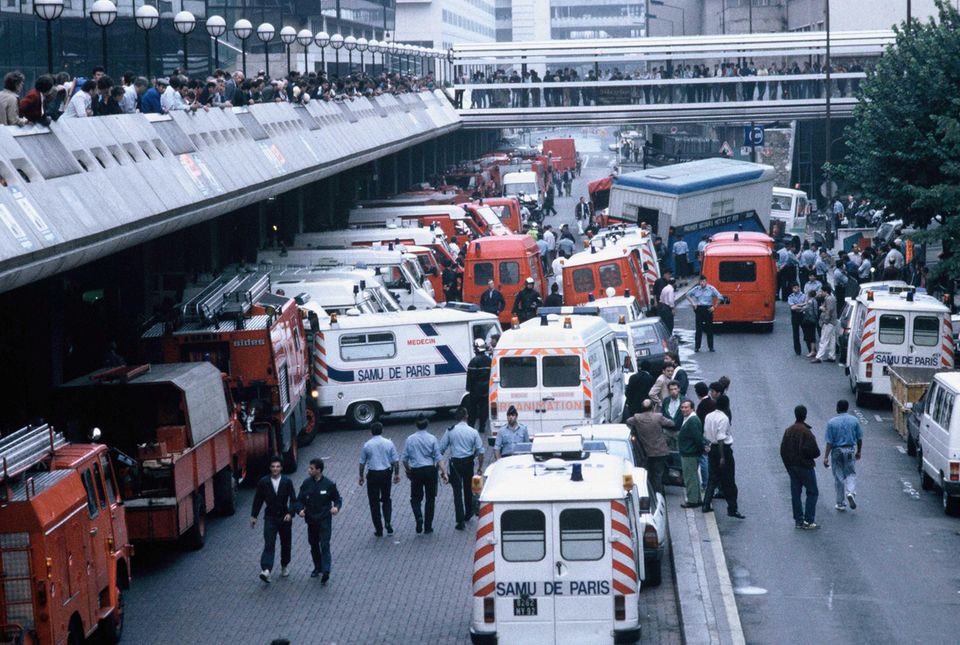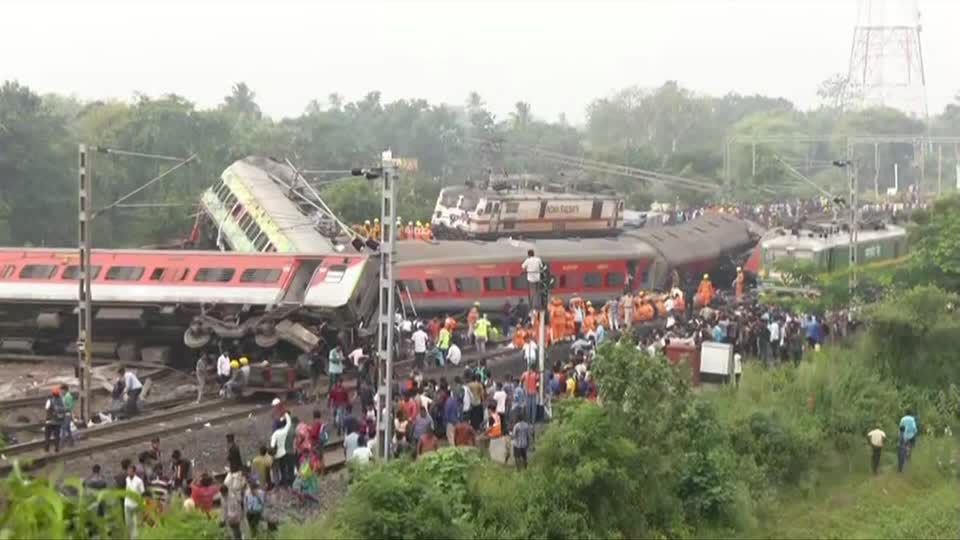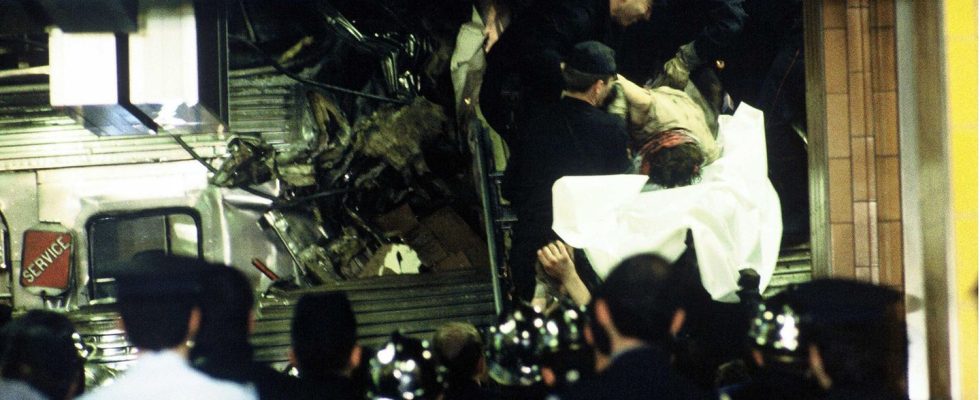On June 27, 1988, a catastrophe occurred in the Gare de Lyon train station in Paris. The brakes of an approaching local train fail and it crashes into a stationary train with full force. More than 50 people die and the same number are injured. Today marks the 35th anniversary of the accident.
It is a balmy summer evening when disaster rolls towards the Gare de Lyon train station in Paris in the form of local train number 153951. The train is en route from Melun, a town about 50 kilometers south-east of Paris. The journey to the historic railway terminus in the French capital normally takes 40 minutes. But that day there is a delay. Around ten kilometers from Paris, a young mother suddenly pulls the emergency brake. The 21-year-old had failed to notice that the train was not going to Le Vert de Maisons station as usual due to the new summer timetable. There she wants to get off to pick up her children from school on time. When the train stops, she hastily jumps out and runs away.
The 42-year-old train driver now has to switch off the alarm and release the brakes again. These work via a compressed air system that connects all eight wagons with one another. He radioed the control center about the incident. Then he gets out and, together with the train attendant, sets about solving the problem. To activate the emergency brake again, he has to flip a small lever between the first two wagons. However, because it is jammed, he leans on the compressed air valve for more support and accidentally closes it. From then on, the rear seven cars are separated from the braking system.
Train driver believes in “air lock” – a fatal error
But that’s not all. When the brake line lever is set to “off”, a safety mechanism is triggered. This blocks the brakes even after restarting the emergency brake. This is to prevent the train from running without compressed air in the braking system.
Because the train does not move even after the lever is thrown, the driver suspects an “air lock”. This is a well-known railway workers problem where the air pressure in the braking system is too high after the emergency brake has been applied. However, because he doesn’t want to risk any further delay, he doesn’t call a technician for help. Instead, he wants to solve the problem on his own. He gets out again and manually deflates each of the seven wagons. Although the brakes are free again afterwards, he has also let the valuable residual air out of the system and disabled the safety system. Without compressed air, all train brakes are inoperative. Only the brakes in the railcar work, which is why the measuring devices in the driver’s cab also show normal values.
The train is already 26 minutes late due to the unscheduled stop. Many passengers have now disembarked to continue their journey with other means of transport. The dispatcher instructs the train driver to skip the next stop and go through to Gare de Lyon without stopping. The failure of the brakes by stopping at Maisons Alfort station around seven kilometers from Paris could have prevented the disaster.
A full train waits at the station in Paris
Meanwhile, at Gare de Lyon station, local train number 153951 bound for Melun is still on platform 2 because the train attendant was late that day. More and more people get on and crowd into the waiting train. “The train was full. And due to the warm weather, the air was very stuffy,” recalls a passenger in a TV documentary. Luckily for her: Because she doesn’t want to wait any longer, she gets out again. A circumstance that later saves her life.
Since the track before Gare de Lyon has a steep gradient, the train driver from the oncoming train is stopped by a signal to initiate the braking process. But when he applies the brakes, they hardly react. At 95 kilometers per hour, the 300-ton train races towards the station, completely out of control. The desperate train driver asks the train attendant to look for a handbrake. Shortly after 7 p.m., the train driver radioed a resolved warning to the control center. “Stop everything, I have no brakes,” he reports.
It triggers the radio alarm signal that goes off in the control center and in the cabs of all nearby trains. The interlockings immediately switch all signals from green to red and the train drivers stop their trains wherever they happen to be. Within seconds, the entire system comes to a standstill. In his panic, however, he completely forgets that the train is also equipped with electric brakes. However, the train drivers are very reluctant to use these, since their use together with the compressed air brake could lock the wheels. He also forgets to give his name and location when calling the control center. This leads to another problem: those responsible cannot manually divert the train to a free track.

Eleven minutes after the accident, the first rescue workers appear at the Gare de Lyon. There will be more than 300 in the course of the further salvage work.
© Action Press
Normally the trains are automatically guided to free tracks. This is done by appropriate programming. However, when the driver calls for a general emergency, the automatic point setting is overridden. This should enable the signallers to have full manual control of the rail network in the event of imminent danger. But now the speeding train stays on its track – the same one where the local train to Melun is waiting in the station.
Passengers prepare for impact in the last carriage
The train driver rushes to the passengers and takes them to the last car of the train, where they prepare for the impact. The signalmen in Paris see the runaway train rush past them. They use the station intercom to ask the passengers to get off the train immediately. The passengers rush to the doors. The train driver also warns his passengers. Instead of fleeing to safety, he remains in position until impact to save as many passengers as possible with his announcements. Then the heavy train hits the driver’s cab at around 70 kilometers per hour and digs into several railcars.
Eleven minutes after the accident, the first rescue workers appear at the Gare de Lyon. There will be more than 300 in the course of the further salvage work. You are presented with a picture of horror. “It was terrible,” recalls an emergency doctor. “Bodies were hanging out of the windows. You saw decapitated people and people who had lost arms or legs. It was even worse than relief efforts in a war zone.” During the extremely violent impact, the passengers’ limbs were severed from the iron parts of the nesting wagons. Many of the injured can only be saved by amputation. Eyewitnesses report an “image of horror” at the scene of the accident.

Rescue workers tend to a woman trapped in the rubble
© Action Press
The wagons are wedged together in such a way that the salvage work is very difficult. Some of the wreckage piles up to the station ceiling. A young girl, who was discovered shortly after the crash that evening, had to endure nine hours, fully conscious, locked in the wreck.
Around 12 o’clock the next day, only dead people are recovered from the rubble. A total of 56 people died in the accident. 57 others are injured.
The rebirth in Paris
The Notre-Dame fire hit France to the heart. Now the country is pursuing the complicated repairs
The train driver is initially sentenced to four years in prison for negligent homicide. In the second instance, however, the verdict is reduced and he receives a six-month suspended sentence. The train conductor is acquitted in the second instance and the woman who operated the emergency brake gets away with a fine.
The state railway company SNCF changed its safety regulations after the tragedy. Intercoms enable passengers to contact the train driver. The old emergency braking system is replaced. In an emergency, only the train driver can activate the brakes himself. In addition, the training of train drivers is being improved and the radio system is being modernized.
Sources: National Geographic documentaryDPA,

Watch the video: A serious train accident shook eastern India on Friday evening. According to the government, this is the worst rail accident in India in more than a decade. Despite hundreds of dead, rescuers search for survivors in the rubble.

